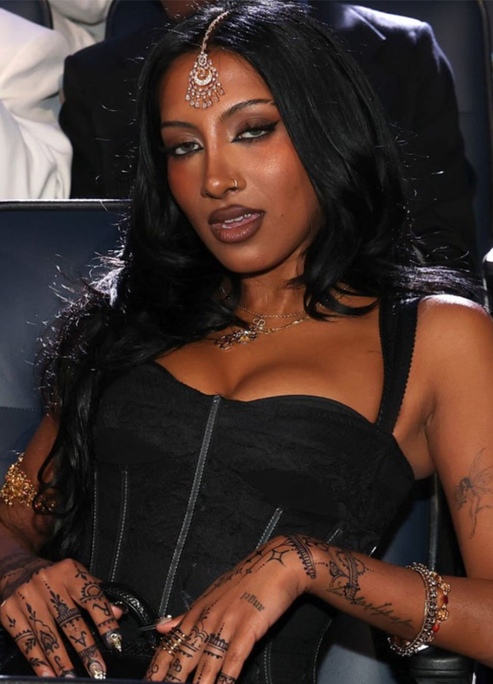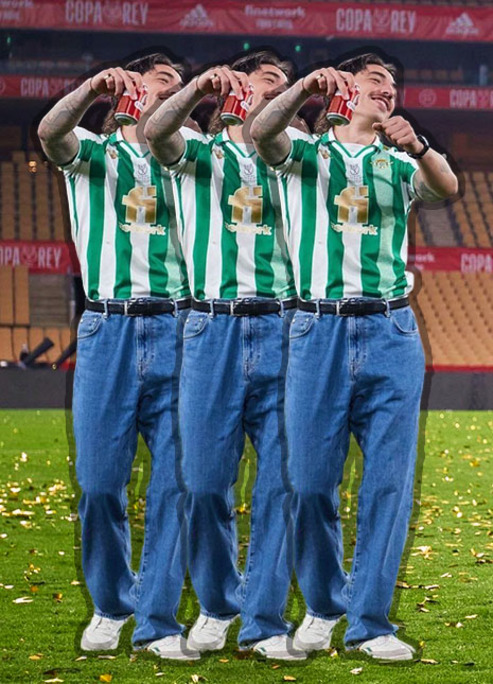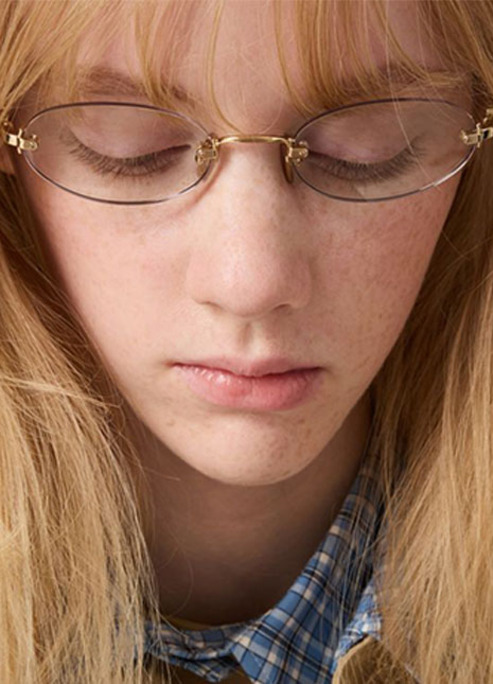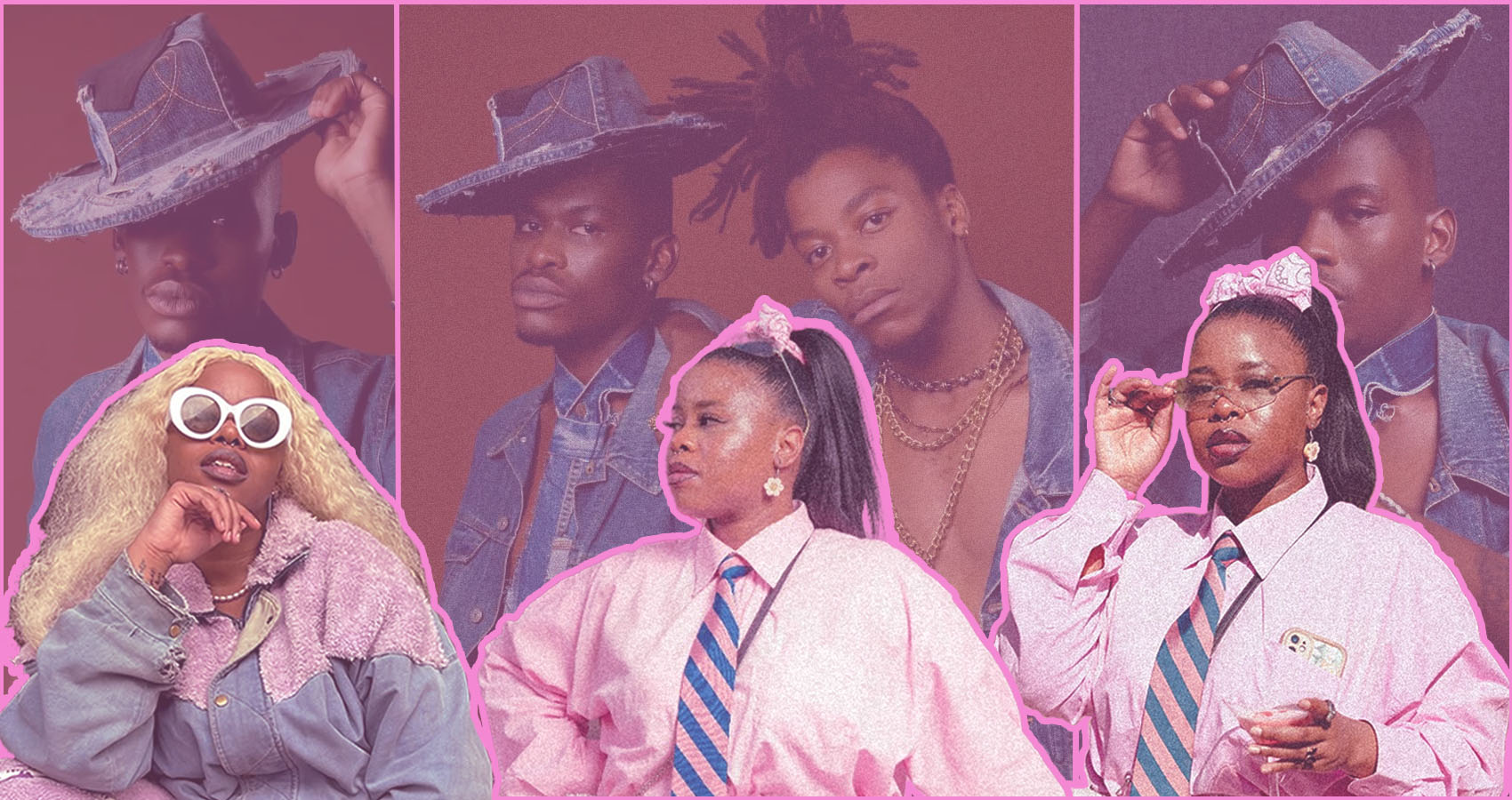
Andria Cindi Talks Styling, Sustainability, Beading & Fashion’s Future
The South African stylist shares her passion for denim.
It's not easy being a stylist these days. With trends coming and going, with all the matches and mismatches, the professional has to keep their eye on the prize: their client. Andria Cindi seems to excel at this — and in design too. The South African designer has dabbled in several areas of fashion, proving herself to be a versatile figure in the industry. Below, FIZZY sits down with the multi-fashion stylist to discuss everything from her passion for denim to the future of fashion.
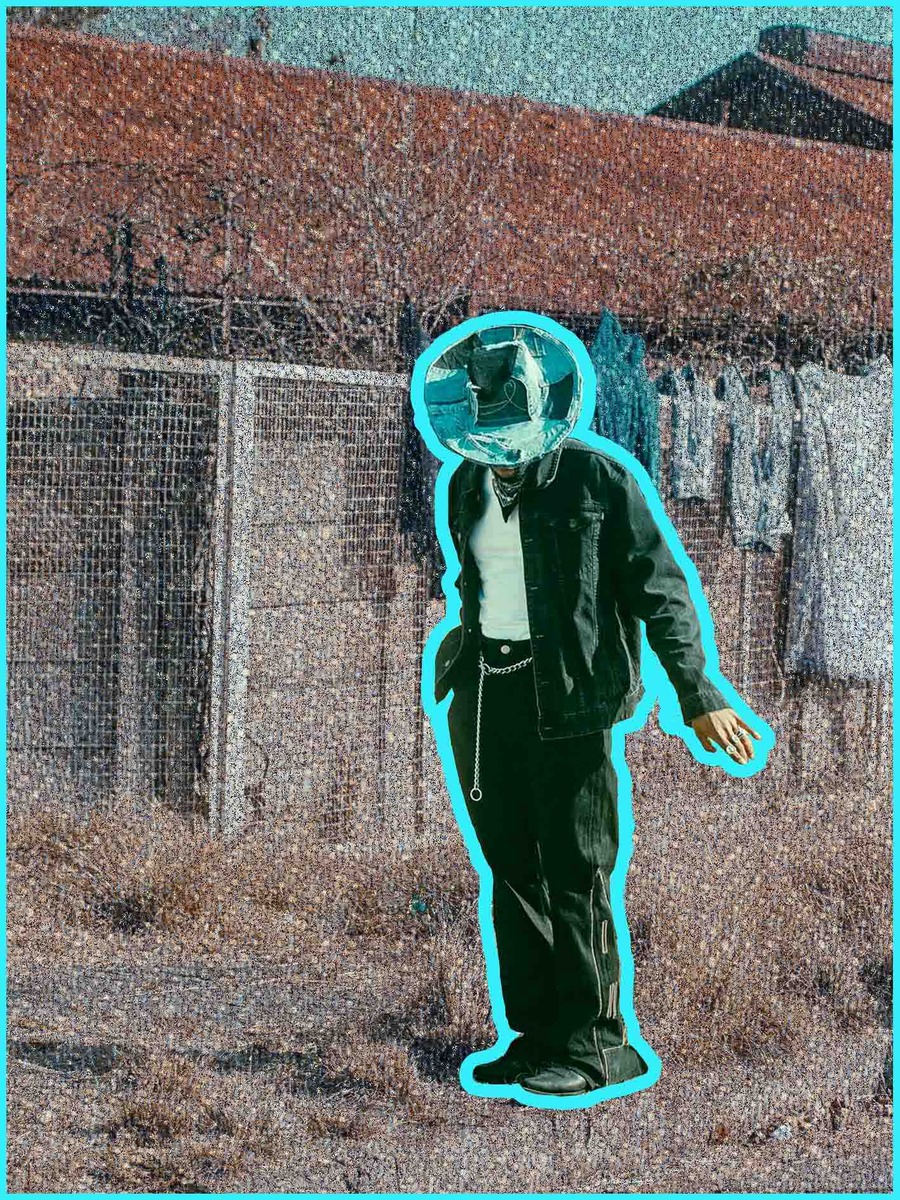
Andria, can you tell us about your journey into fashion styling?
My journey into fashion styling has been dynamic and rewarding, though it hasn’t been without its challenges. During my final year of Fashion School, I was financially excluded, and I had to make a tough decision: return to my small hometown or stay in Johannesburg and make something out of the two years of schooling I had completed. I chose to stay, and that decision became the foundation of my career.
While I value the education I received, I feel I’ve learned more on the job as a freelancer than I ever could in a classroom. Starting as a sustainable designer, focusing on upcycling denim and crafting beaded bags through my brand, KikiWam, I gradually transitioned into styling. Collaborating with artists like Musa Keys and styling DJ Radix’s performances using sustainable materials has allowed me to merge creativity with functionality. Each project has been a learning experience, shaping my perspective on fashion as a form of storytelling and self-expression.
What inspired you to become a stylist?
My inspiration comes from a deep love of fashion and storytelling, which I believe runs in my blood. I come from a family that loves clothes, loves to look good, and always appreciates a classic pencil skirt. My grandmother owned a sewing machine, and I would watch her make her own aprons and oven mittens with such care. My mom crochets and often shares stories of how her grandmother would make her a dress for Christmas every year. These memories, woven with creativity and tradition, shaped my early connection to fashion.
Beyond family influences, growing up I was captivated by shows like The Devil Wears Prada, Clueless, Kimora: Life in the Fab Lane, America’s Next Top Model, and Project Runway. These sparked my imagination and showed me the endless possibilities of fashion. Looking back, I truly think it’s an ancestral calling—something that’s been passed down through generations.
Styling is also my stepping stone toward my ultimate dream of becoming a costume designer for film, specifically Marvel. Working in such a fast-paced industry, especially in music, has helped me develop the skills and vision needed to achieve that goal.
What would you say has been the most rewarding part of being a stylist?
The most rewarding part is seeing my work bring confidence and joy to clients. Whether it’s an artist wearing a sustainable piece on stage or a client embracing their unique style, their reactions make the effort worth it. I also love the creative challenge of blending my sustainable design ethos with the needs of my clients or brands—each project feels like a unique puzzle.
How would you describe your personal style, and how has it evolved over time?
My personal style is a mix of pink, denim, chains, and beads—a playful yet intentional blend that feels authentically me. Over time, I’ve leaned into creating a more purposeful wardrobe, focusing on quality over quantity and blending vintage with modern elements. My style reflects my advocacy for slow fashion and my belief in finding beauty in the unconventional while staying true to my roots and individuality.
What challenges did you face when you first started your career in fashion styling, and how did you overcome them?
When I first started, I quickly realized that I had to put my foot down as a stylist and truly trust my vision and intuition. While listening to the client is important, there were instances where clients wanted to take the lead on projects they had trusted me with, and I had to learn how to assert myself and ensure the work stayed true to my creative direction. I also faced challenges with limited resources, which pushed me to innovate with thrifted or upcycled materials. Additionally, I’ve learned that not every job is the right fit for me. It’s okay to say no to opportunities that don’t align with my values or stylistic vision. Overcoming these challenges required resilience, self-confidence, and a willingness to stay authentic.
How would you describe the fashion scene in South Africa today?
South Africa’s fashion scene is a vibrant mix of heritage and innovation. Designers are reinterpreting traditional aesthetics with modern techniques, creating a global appeal while staying rooted in local culture. There’s also a growing focus on sustainability, which aligns with my values as a designer and stylist. The scene is dynamic and diverse, with designers and stylists pushing boundaries and amplifying African narratives.
Do you incorporate elements of local culture into your styling work?
Absolutely. I often draw inspiration from African beading techniques and patterns, reflecting the craftsmanship and artistry inherent in our culture. For example, I’ve incorporated Nigerian beading techniques in my work while adding my own South African touch. I believe that celebrating local culture makes fashion more meaningful and adds a layer of authenticity to my designs and styling projects.
Who are some South African designers or brands that you admire and enjoy working with?
I admire brands like Thebe Magugu for his amazing storytelling and for elevating African narratives on a global stage, Sinchui for their fresh, innovative approach, and Munkus for their unique aesthetic. I’ve had the pleasure of collaborating with Berita on her merchandise catalog.
How do you balance global fashion trends with South African cultural influences when styling clients or shoots?
I very rarely follow global trends in the conventional sense. Don’t get me wrong—I love trends, and I appreciate how different people and designers interpret them. But in a world that is ever-changing and fast-paced, I always say, “Tailor the trend to you; don’t tailor yourself to the trend, or you’ll get lost.” This is how I approach styling.
I view global trends more as a framework to work within rather than something to follow blindly. I prioritize infusing local culture and sustainability into my work. Whether through traditional techniques, local textiles, or handcrafted accessories, I ensure my styling reflects a uniquely South African identity. This balance allows me to stay relevant globally while staying true to my roots and values.
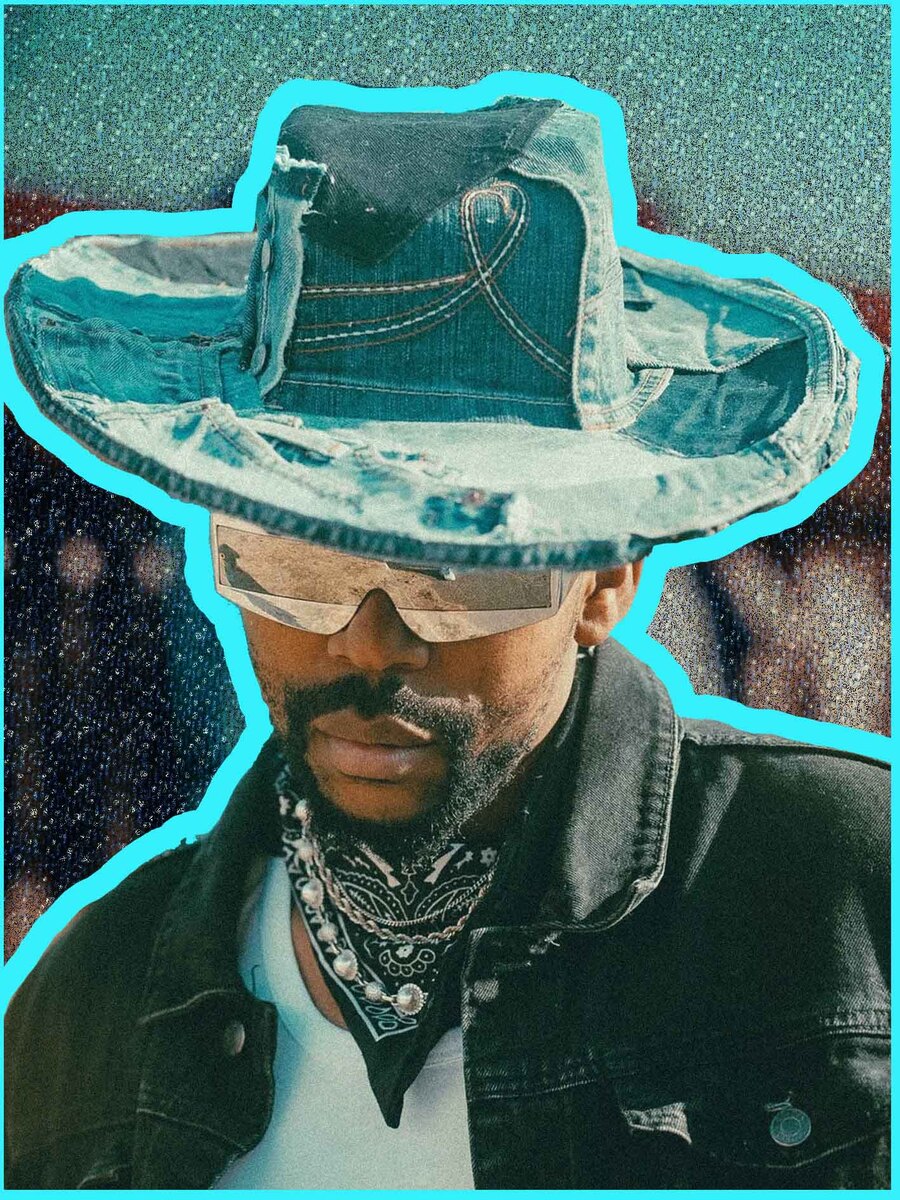
Can you walk us through your process when styling a client or working on a photoshoot?
I start by understanding the client’s vision, personality, and goals for the project. From there, I develop a concept, source sustainable or locally-made pieces, and create mood boards to align the creative direction. Collaboration is key—I ensure the client or team feels part of the process, so the final look resonates with them while pushing creative boundaries.
When styling a photoshoot or a project, how do you balance creative freedom with the expectations of the brand or client?
It’s all about communication and finding harmony between my creative vision and the client’s needs. I always want the project to speak for my creativity without having to explicitly state it. I take the time to fully understand the brand’s goals or the client’s vision before integrating my ideas. When styling, I focus on ensuring that my style identity and the client’s identity coexist harmoniously.
How do you choose the right outfits for different body types and personalities? Do you have a specific approach to creating looks for each client?
Oddly enough, when I was in fashion school, I hated men’s wear. I remember telling my classmates, “You’ll know I’ve hit rock bottom if I ever go into men’s wear.” But surprisingly, it has turned out to be one of my strengths.
Because I work a lot with denim, which is a tough fabric, I find that I’m not as fond of drapey, flowy fabrics. Don’t get me wrong, I love working with women’s bodies, and it’s what keeps me on my toes—finding new ways to mold denim onto different body shapes. The shapelessness of the male body is easier to style, but I find it’s always a welcome challenge to see how I can accentuate the female form.
When choosing outfits, I always start by understanding my client’s body type, personality, and how they want to feel in their clothes. My approach is to create looks that celebrate their individuality, keeping their comfort and confidence at the forefront. Whether it’s accentuating curves or finding the right fit, the goal is to make sure they feel authentic and empowered in what they’re wearing.
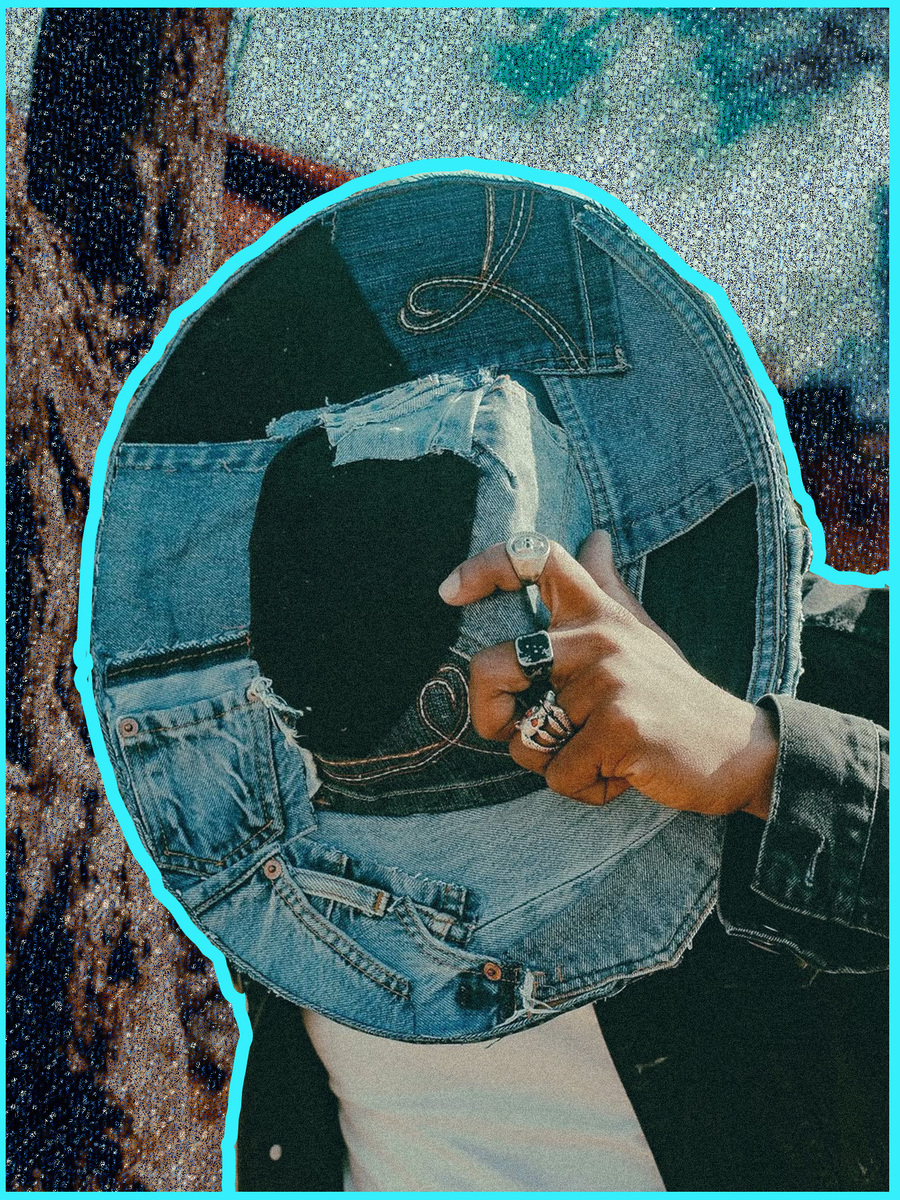
What is Kiki Wam?
KikiWam is a beaded handbag line that I started as a way to express my love for craftsmanship, sustainability, and my family’s influence. My middle name is Qiniso, which means “The Truth” in IsiSwati, my native language. Growing up, my younger sister couldn’t pronounce the “Q” click in my name, and she started calling me “Kiki.” A few years later, when my nephew (same sister’s child) struggled with my name, he called me “Kiki Wam,” meaning “My Kiki.”
The brand is an ode to my roots and the people who have shaped me, and I aim to expand it to encompass my styling and fashion illustration business.
How do you approach sustainability in your work as a stylist? Is it something that has always been important to you?
Sustainability, for me, started as a way to fit in. Growing up, my mom never bought us trendy clothes; instead, she focused on functional pieces that would last. To keep up with the fashion trends, I’d rip my jeans, bleach my T-shirts, and even distress my sweaters (this was during the Yeezy hobo chic trend). Thrifting came into the picture when I was in varsity, and since the clothes were second-hand, I felt less guilty about “destroying” them—though my mom didn’t always see it that way. Over time, what started as a way to fit in turned into a passion for sustainability. I discovered a whole community that was making a living off of upcycling and thrifting, and I began to see the value in it beyond just fashion.
As I’m still early in my career, I sometimes work with small budgets, and thrifting has become a huge part of how I create diverse looks. It’s a creative outlet and a way to give clothes a second life while also maintaining a sustainable approach. This practice has been key to shaping my styling philosophy and continues to drive my commitment to responsible fashion.
What do you think about sustainable fashion and its role in the future of the industry? And of the world too?
Sustainable fashion is not only crucial for the future of the industry but also for the world at large. We’re seeing a lot of exciting developments, like modularity in fashion, where pieces can be transformed and reused in different ways. This kind of innovation is an exciting step toward reducing waste while offering consumers more versatile options.
Sustainable fashion is more than a trend—it’s a movement toward a more responsible, mindful industry. It’s about designing with longevity in mind, reducing waste, and empowering communities. I’m excited to see how the industry continues to evolve, with sustainability and ethical practices at its heart.
Who or what are your biggest sources of inspiration when it comes to styling?
I always say my personality is a mixture of every movie I’ve ever watched. Film has always been a huge influence on my style, from iconic looks to the narratives that each character tells through their wardrobe. I also draw inspiration from art in every form—whether it’s a new TV show, a song, or my Pinterest, which is one of my favorite places to get lost in.
Books, particularly old fashion and craft books, also inspire me deeply. I find so much value in the history and evolution of style, and they often guide my design choices. Beyond that, I look to my peers—the Johannesburg creative scene, in particular, is a huge source of inspiration for me. It’s so vibrant, rich in diversity, and constantly evolving, and I think there’s nothing cooler than being part of that.
Are there any South African or African artists, musicians, or celebrities you find particularly inspiring in terms of fashion?
I absolutely love Shekhinah—her music and her style are amazing. She has a unique, bold presence that resonates with me, and I admire how she mixes streetwear with high fashion in such a personal way.
KindlyNxsh, an upcoming rapper, also inspires me with his carefree style. It’s effortlessly cool, and he owns that laid-back yet confident vibe that I really appreciate.
Moozlie is another one—her style is so distinctive and has a certain edge to it. She effortlessly blends modern fashion with her own twist, and I think she’s a great example of someone who really knows how to express her individuality through her wardrobe.
What’s key to maintaining a successful business in the fashion industry?
Building strong relationships, staying true to your brand identity, and consistently delivering quality are key to maintaining a successful business in the fashion industry. The industry is ever-changing, so adaptability and innovation are also important. Staying connected with clients, collaborating with others, and continuously learning from the industry and your experiences can keep your business thriving.
It’s also crucial to build a community around your brand—whether that’s through social media or in-person interactions. Word of mouth and personal connections can be just as powerful as any marketing strategy. Lastly, resilience is key. There will always be challenges, but staying focused on your goals and being willing to evolve is what sustains success in the long run.
What are your hopes for the future of fashion in South Africa?
I think there’s nothing cooler than being African right now. The world is paying attention to us—whether it’s through music, culture, or fashion. I hope more of us get to make it to the global stage, showcasing the richness of our heritage and telling our authentic stories.
For the fashion industry in South Africa, I hope we continue to push boundaries and make a strong impact globally. Our creativity, craftsmanship, and unique cultural narratives are powerful assets, and I believe more South African designers and brands should be celebrated on the world stage. It’s about telling our stories through our designs and representing who we are authentically.
Do you have any specific goals or projects you’re working on that you’re excited about in the near future?
I’m excited to drop my first collection this year, which will be sustainably made and, of course, feature plenty of denim. It’s a big step for me, and I’m eager to showcase the combination of sustainability and creativity that’s always been at the core of my work.
I’m also planning to start a short course where I’ll teach people my beading skills and help them understand how to capitalize on that craftsmanship. I believe in empowering others with the tools to create and thrive in the fashion industry.
What would be your dream project or client to work with in the future?
I have a couple of dream collaborations and projects I’m passionate about. I’d love to partner with iconic brands like Levi’s, Crocs, and Converse—each of these brands aligns with my love for sustainable fashion and creative expression. A collaboration with Colm Dillane, the founder of Kid Super, would also be a dream, as I admire his bold and playful approach to fashion.
But, my ultimate achievement would be to work as the costume designer for a Marvel movie or an HBO series written and directed by Issa Rae.
Where do you see yourself and your styling career in the next 5-10 years?
In the next 10 years, I see myself having solidified my place as a versatile and sought-after stylist with a focus on sustainable fashion. I hope to have grown my own brand, KikiWam, beyond just accessories, incorporating fashion styling and illustration. My goal is to be at the forefront of creating impactful, sustainable designs that merge African heritage with global trends.
I envision collaborating with top international artists, working on high-profile projects, and having the opportunity to style for global films and campaigns. I also see myself mentoring and teaching the next generation of stylists, sharing my knowledge on sustainable fashion and the creative process. Ultimately, I want to leave a legacy that not only celebrates my creative journey but also contributes to changing the industry for the better.
What advice would you give to aspiring stylists who want to break into the fashion industry in South Africa or internationally?
Believe in yourself, believe in your path, and fight for something meaningful—then be loud about it. Educate yourself, stay humble, and be kind to people because we’re all trying to make it. There’s more than enough space for everyone to succeed.
Networking is crucial—put your work out there, whether through social media, collaborations, or freelance opportunities. The fashion industry can be tough, but consistency and resilience are key. Don’t wait for the perfect moment to start; use what you have and keep pushing forward.
Take time to pause and reflect; the weeks may feel long, but the years are short. Learn from every experience and stay open to growth. Most importantly, stay true to your unique perspective, and remember that the journey is just as important as the destination.
How do you see the industry evolving in the next 5-10 years? Generally speaking.
I believe the international fashion industry will continue to evolve toward greater inclusivity and sustainability. We’ll see more brands embracing ethical practices, from sourcing materials to production, with transparency becoming a key factor in consumer decision-making. Technology, including AI and virtual fashion, will play a larger role, offering more innovative ways to experience fashion.
There’s also a growing focus on local and cultural diversity, with African designers and other emerging markets gaining more recognition and shaping the global landscape. The intersection of fashion, music, and digital platforms will continue to grow stronger, making fashion more accessible and integrated into everyday life.
I think we’ll also witness a shift toward modular, long-lasting clothing and more custom-made pieces, as consumers increasingly seek individuality and quality over fast trends. With this, fashion’s relationship to identity and self-expression will be more profound than ever.
Want to know what Andria is up to next? Give her a flow on Instagram @niso_q.



